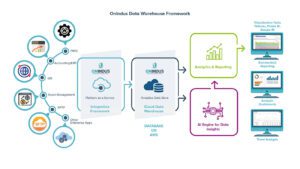Introduction: When Reporting Feels Like a Maze
For most capital project teams, reporting shouldn’t feel like navigating a maze — but it often does.
Multiple systems, inconsistent updates, and endless coordination create bottlenecks that waste time and obscure real performance.
At UC San Diego, the Capital Program team was no stranger to these challenges.
With 121 active projects valued at $8 billion, and frequent requests for cost and schedule updates from Associate Vice Chancellors, Vice Chancellors, and Department Heads, the reporting burden was overwhelming.
Their journey from manual reporting chaos to automated, data-driven clarity is a masterclass in how higher education institutions can evolve — through smart data strategy, strong policy, and scalable automation.
The Challenge: When Systems, Policies, and People Don’t Align
Inconsistent systems and fragmented processes are common across large organizations, but UC San Diego’s situation revealed a deeper problem: a lack of alignment between people, policy, and technology.
The team identified five major pain points:
- System Problem:
Multiple systems with siloed data and limited transparency. - Policy Problem:
No standardized mandate for how or when project information must be updated. - Terminology Problem:
Different teams used different terms for the same concepts, creating confusion in reporting. - People Problem:
Lack of accountability led to inconsistent or inaccurate data entry. - Disparity Problem:
Misalignment between business processes and system workflows — and in some cases, reliance on Excel instead of a true PMIS.
The result? Leadership was making decisions without access to real-time data, while PMs and liaisons spent hours chasing information manually.
Case Study: UC San Diego’s Reporting Transformation
Since 2010, UC San Diego had used Trimble’s Unity Construct to manage capital projects. But as the program expanded, the need for more visibility became urgent.
Here’s what the reporting landscape looked like before the transformation:
- Schedules tracked outside Unity Construct
- Status updates missing or outdated
- Manual coordination between PMs and liaisons
- Information gaps between systems
Each of the 35 project managers and 4 leadership liaisons spent nearly 94 collective hours per month reconciling data across systems.
This wasn’t sustainable — or scalable.
The Turning Point: Building a Data Strategy
UC San Diego realized that better tools alone wouldn’t solve their reporting challenges. They needed a holistic data strategy — one that connected technology, policy, and people under a shared framework.
The team designed a three-pronged approach:
- Data Governance Strategy
Establish clear rules for how data is collected, updated, and validated. - Policy Strategy
Standardize expectations for updates and accountability across all projects. - Data Analytics Strategy
Build the reporting infrastructure to deliver insights in real time.
By connecting these strategies, UC San Diego created a foundation for consistent, automated reporting that reflected true project health.
The Solution: Policy, Process, and Automation in Harmony
The transformation started with small but powerful process shifts.
1. Clear Data Policies
- Automated triggers were created in Unity Construct to flag when projects received funding.
- The funding assignment automatically updated the Project Reporting Indicator.
- A clear policy was established for Project Health RAG Status — with Red, Amber, and Green indicators based on defined rules.
- Schedule templates were standardized to include only milestone tasks, ensuring focus and consistency.
2. Structured Processes
- Every PM was required to submit a monthly project update by the 10th.
- Exceptions were automatically tracked via an exceptions report, reducing follow-up time.
3. Automation
- UC San Diego leveraged its Unity Construct Data Warehouse subscription.
- A Tableau dashboard provided AVCs, VCs, and department heads with real-time access to cost, schedule, and status updates — no manual compilation required.
The result was a single, automated reporting system — accurate, consistent, and accessible.
From “Data Castle” to Dashboard Culture
On page 13 of the presentation, the “Data Castle” metaphor captured a crucial cultural shift: data is an asset to protect and manage strategically.
The team established a central data “fortress” — a place where validated, structured, and synchronized data lived. This allowed leaders to make confident decisions without waiting on fragmented reports.
The new Capital Program Metrics Dashboard visualized:
- 121 total projects worth $8.02B
- Project health breakdown (Green, Yellow, Red)
- Phase-wise completion data
- Active program metrics by VC area
This shift wasn’t just technical — it was behavioral. Teams began to rely on data as a live operational guide rather than an afterthought.
The Human Impact: Hours Saved, Accountability Gained
The transformation had immediate human impact:
- Leadership liaisons saved 19 hours per month on coordination.
- Project managers reduced their reporting time to just 30 minutes each month.
- A total of 94 hours per month were reallocated from data collection to strategic work.
But the bigger win was cultural:
- Transparency improved, giving stakeholders real-time visibility.
- Accountability increased, as each PM’s data directly informed executive dashboards.
- Confidence grew, as leadership could justify overages and identify issues early.
This wasn’t just better reporting — it was a better way of managing projects.
The Results: Time, Trust, and Transformation
By aligning policy, people, and process, UC San Diego achieved measurable, organization-wide benefits:
- Time and Cost Savings – Reduced manual reporting hours and administrative overhead.
- Increased Transparency – Stakeholders accessed live dashboards instead of waiting for static reports.
- Higher Accountability – PMs updated progress regularly and consistently.
- Better Insights – Leadership could justify variances and spot risks early.
In short, UC San Diego built a self-sustaining data ecosystem — one that turned reporting from a chore into a competitive advantage.
Future-Proofing for AI
UC San Diego didn’t stop at dashboards. With a foundation of reliable data and strong governance, the team began preparing for the next frontier — AI integration.
Their “Future Proof for AI” framework includes:
- Establishing data collection policies and standard naming conventions
- Creating a centralized data repository for AI training and insights
- Leveraging exception reports to maintain data quality
- Introducing AI literacy training for teams
- Establishing a policy for AI governance
- Piloting and investing in AI tools for predictive project management
By treating data as an organizational asset, UC San Diego positioned itself to lead the AI transformation in higher education capital programs.
Lessons Learned: Turning Data into Direction
The UC San Diego team distilled their success into actionable lessons any capital program can follow:
- Establish Clear Policies
Define expectations early and standardize across departments. - Leverage Processes
Automate repeatable workflows and embed accountability checkpoints. - Build a Knowledge Library
Create playbooks, training guides, onboarding resources, and workflow documentation. - Integrate Data Systems
Connect PMIS, financial systems, and reporting tools to eliminate duplication. - Automate Reporting
Use data warehouses and visualization tools to deliver real-time dashboards.
These strategies created not just reports — but a culture of continuous improvement.
The Road Ahead: From Data-Driven to AI-Enabled
As UC San Diego moves forward, its transformation serves as a blueprint for other institutions.
The next evolution will focus on:
- Embedding training guides directly in workflows
- Building interoperability between systems
- Using analytics for real-time feedback
- Expanding AI governance policies
- Customizing PMIS for capital project intelligence
By investing in AI-readiness today, UC San Diego is future-proofing its capital program for tomorrow’s demands.
Conclusion: From Manual Reporting to Strategic Foresight
What began as a maze of disconnected systems became a model of clarity, accountability, and collaboration.
UC San Diego’s story proves that when data strategy meets execution, transformation follows — not just in technology, but in mindset.
Their journey highlights a truth every public agency, university, and healthcare system should embrace:
Reliable data doesn’t just inform decisions — it builds trust, drives efficiency, and fuels innovation.
Transform Your Reporting, Transform Your Results
If your team is still wrestling with spreadsheets, siloed systems, or manual updates, UC San Diego’s success shows what’s possible.
Download our free guide: “From Spreadsheets to Strategy: How to Build a Data-Driven Capital Program.”
Inside, you’ll learn:
- How to create a unified data governance strategy
- Steps to automate reporting through your existing PMIS
- Real-world lessons from UC San Diego’s $8B transformation
- A framework to future-proof your capital program for AI
Next Step: Schedule a free Data Strategy Consultation with OnIndus.
Discover how your organization can eliminate manual reporting, unlock real-time insights, and prepare for the AI-driven future of capital program management.
Because the difference between managing data and mastering it — is strategy.




